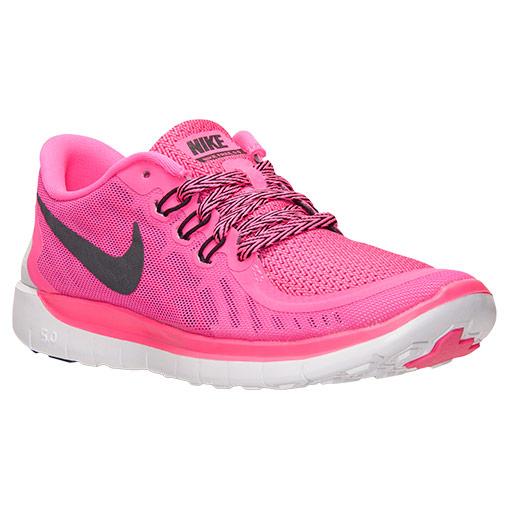Enhanced Movement Hexagonal flex grooves offer six points of flexibility to let your foot move naturally in every direction. Natural Stride With an 8mm offset between heel and forefoot height, the Nike Free 5.0 features a low-profile midsole and a rounded heel to encourage a more natural footstrike. Support The engineered mesh upper provides the comfort and fit you'd expect of a traditional shoe, conforming to the shape of your foot to support you as you move. Flywire integrated with the laces delivers added support and an adaptive fit. Shop the Men's Nike Summer Range What you should know about Nike Free Nike Free shoes are specifically designed to let your feet move more naturally and freely than traditional athletic shoes. Because you'll be using some muscles in your feet more than you might be used to, it may take some time for them to get used to all that freedom. To give your feet time to adapt, we recommend you transition into using your Nike Free footwear gradually. As you increase the use of your Nike Frees, you may experience some muscle soreness, just like when you exercise other muscles in your body. This shows that your Nike Frees are working. Keep in mind that everyone responds differently, so your progress may be different than others wearing Nike Free. And of course, running and training in any footwear is never without some risk of injury. So listen to your body, your trainer and your physician-and don't feel bad if you need to stop or rest if necessary. After all, we want you to run Free and train Free- but we also want you to run and train smart. Nike Free Origins After learning that Stanford athletes had been training barefoot on the university's golf course, three of Nike's most innovative and creative employees set out to develop a shoe that felt natural and weightless, similar to bare feet. In 2002, they examined a group of men and women with pressure measuring insoles taped to their feet, using high-speed cameras to capture images of each foot in motion. The team spent eight years studying the biomechanics of shoeless running. The results yielded a profound understanding of the foot's natural landing angle, pressure and toe position, allowing Nike designers to build an unconventional running shoe from the inside out.
-
- Categories
- Architecture
- Art
- Cars & Motorcycles
- Design
- DIY & Crafts
- Education
- Film, Music & Books
- Fitness
- Food & Drink
- Gardening
- Geek
- Hair & Beauty
- History
- Holidays & Events
- Home Decor
- Humor
- Kids
- Women's Fashion
- Men's Fashion
- Leisure & Outdoors
- People
- Photography
- Products
- Science & Nature
- Sports
- Technology
- Travel & Places
- Weddings
- Other
- Property
- Animal
- Celebrities
- Health & Fitness
- Illustrations & Posters
- Quotes
- Services
- Renovation
- Home Building
- Business
- Toys
- New
- Popular
- Gifts
- Videos
- Help / Contact Us
- Terms & Privacy
- What is InterestPin


